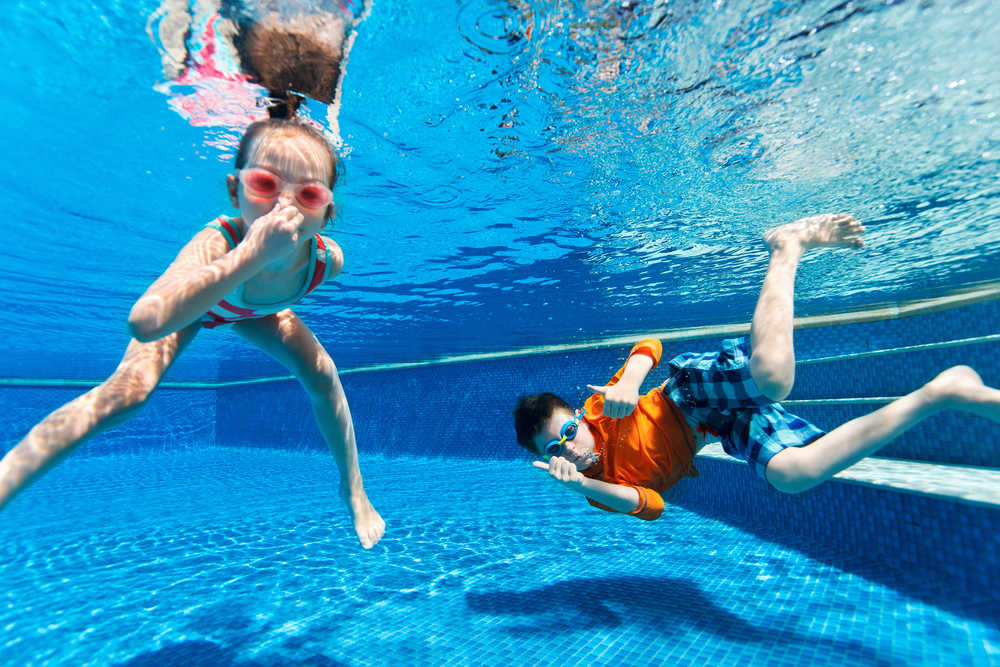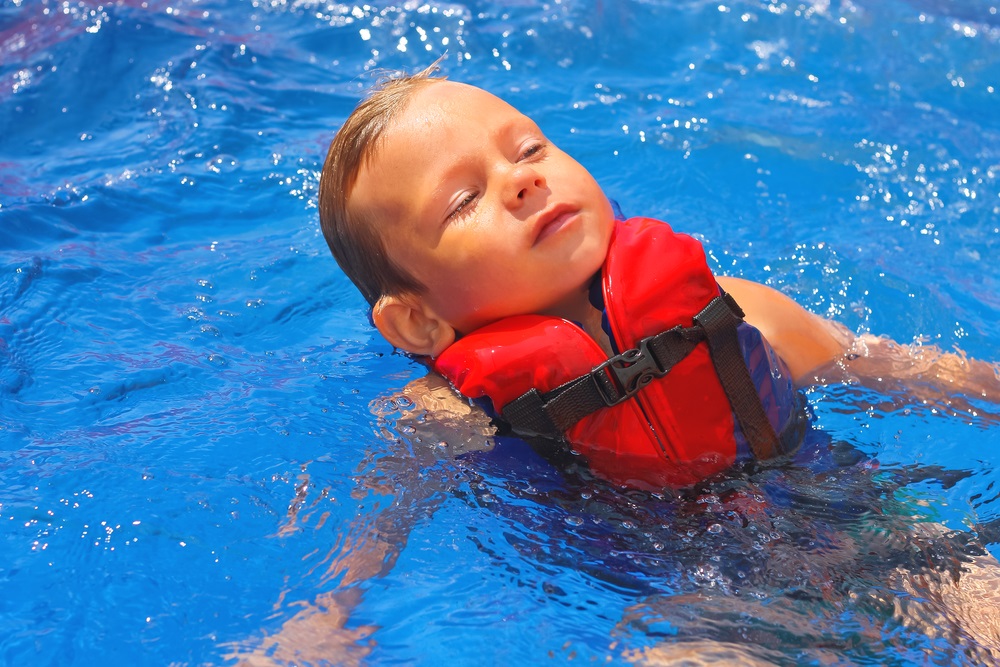No swimming pool owner wants to have his pool become a statistic of one of the thousands of pools across the United States in which a person has drowned. Understanding that swimming pool safety needs to be continually front of mind is something that every pool owner needs to remember when they say, “Let’s get a swimming pool.”
Even one moment of inattention can lead to a tragic accident If you’re a parent you know that children are quick and they are crafty! Left to their own devices, they will find a way to scale a swimming pool fence or outsmart any pool safety measure you have employed for their safety. That’s why as a pool owner and an adult you need to add layers of safety and do everything you can to keep everyone safe.
How To Layer Swimming Pool Safety Measures

You never want your swimming pool to be anything but fun, games, outdoor dinners and delicious glasses of cool lemonade all summer long. Pool owners don’t want to frighten their children, but they do want to assure that everyone in the home understands that the pool can be a dangerous place unless everyone in the household is committed to working together to keep it safe.
Your pool contractor is your go-to source for any safety concerns and questions you have. Ask them what they recommend for safety. Ask them what they don’t recommend. Ask them what the best, and the worst, pool safety devices are. Rely on them to offer you suggestions to layer protections to keep everyone — from the youngest family member to the oldest family member to your furry family members safe from harm.
Keeping your pool “the safest room in the house” is something that pool contractors know all about.
How can you layer pool protection for maximum safety?
Layers of safety will enhance each layer that comes after it and the one that has gone before it. Here are some of the layers of pool safety measures you can consider:
- Pool safety fence (this is probably going to be required by law in the area of the country in which you live. Ask your pool contractor about that.
- Door alarms. Set an alarm in your house that sounds when the door is open.
- A pool safety net. This is a net that lies across the top of the pool water — it doesn’t provide protection to the water the way a pool cover does, but can keep people from falling in.
- Pool safety cover. A pool cover can be a “safety” cover or it can be a cover to help keep dirt and debris out. Ask your pool contractor to explain the difference, how they work and what they look like and cost.
- Pool fence alarm. Every pool should have a fence with a auto lock mechanism. Add a pool fence alarm that sounds when the fence is open.
- Sign the children up for swim lessons. Bear in mind that even a child who can swim should NEVER be left alone in the pool. Adults shouldn’t swim alone, either.
- Commit to CONSTANT supervision when anyone is on the pool.
- Have your children wear moisture-activated pool safety bracelets. These sound an alarm when wet.
- Floating pool alarms or infrared alarms. These will sound an alarm when the surface of the water is broken.
- Motion activated security cameras. These can be set to sound an alarm and begin recording when the perimeter is breached.
Layers of pool safety are the best as it enhances the safety with each additional layer you add.
 How to choose a pool safety barrier
How to choose a pool safety barrier
There are many types of pool safety barriers and here are a few:
- Fences (again, probably required by law where you live.
- Outdoor fireplaces and kitchens. This could prohibit someone from getting into the pool, depending on the placement of the fireplace and kitchen.
- A decorative wall. As long as it cannot be scaled this will provide protection and privacy.
- Pool house. If you build a pool house at one of the entrances to the pool area, this is ideal BUT you need to remember to add an alarm, lock the door and employ other pool safety measures.
- Thorny bushes. If you have an area that cannot be fenced, plant thorny bushes — this may only work if the bush is in bloom and truly may not prevent anyone from getting through.
- Pool covers and pool safety nets. These are both ideal methods of covering the swimming pool to prevent a fall into the pool if a child has gotten through other safety layers.
Pool safety fence
It cannot be stressed enough that this will likely be required by law. The height, width and even the construction material may be regulated by law where you live. The fence will need to extend the length and circumference of the pool. Chain link fence cannot be used as this offers ideal toe holds and finger grips for a determined child to climb.
The fence should have gaps that are sma;;er than four inches, be unable to be climbed and should be at least four or five feet tall.
Pool safety cover
Many pool owners consider this more important than a fence — we don’t agree, but we do agree it is an ideal second safety measaure.
Pool safety covers stretch across the top of the swimming pool and is anchored into the deck. It should be difficult enough to put in place that a child can’t open it, but not so difficult that you struggle with it so much that you become discouraged and decide to leave it off.
There are pool safety covers that can support 5,000 pounds; the weight of a small car. If your children out maneuver the other safety measures, this pool cover will support their weight until you reach them.
Pool safety covers also perform double duty in that they keep dirt and debris out of the water. This may save you money on pool cleaning and chemicals.
Pool safety net
These are new to the pool safety world and are basically a net that stretches across the top of the pool. It is mesh and has small enough holes that a child will not fall through. A pool safety net makes sense for many people, but keep in mind it will not keep dirt or debris from getting into the water.
Another plus, for many pool owners is that the pool safety net is virtually invisible and won’t detract from the beauty of your pool.
Pool safety equipment
Keep these pieces of pool safety equipment poolside:
- Life vests — all children should wear them
- A telescoping pool to help pull someone to safety
- Life rings with rope to toss to someone who needs to be pulled to safety
- Learn CPR
- Keep a phone poolside for emergency use ONLY. Don’t be talking or texting while you’re supposed to be supervising the kids in the pool.
What is best? How to decide?
There is no one size fits all answer to what is best. You need to know your family and its unique needs. You need to know your budget. You also need to know your comfort level with being ever vigilant with anyone in the household.
You certainly don’t have to employ each safety measure mentioned to make the pool as impenetrable as Fort Knox, but you do need to keep it as safe as you can and as safe as you can afford. Don’t let money come between you and keeping everyone safe in the pool — you cannot put a price on the safety of your family members.
Multi-level pool safety
Multi-level and multi-layer pool safety measures are still no substitute for ever diligent responsible adult supervision.

